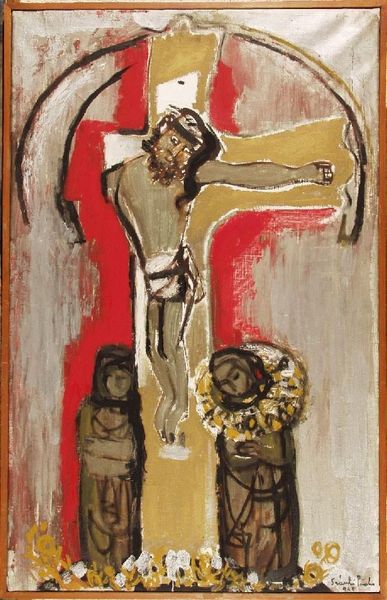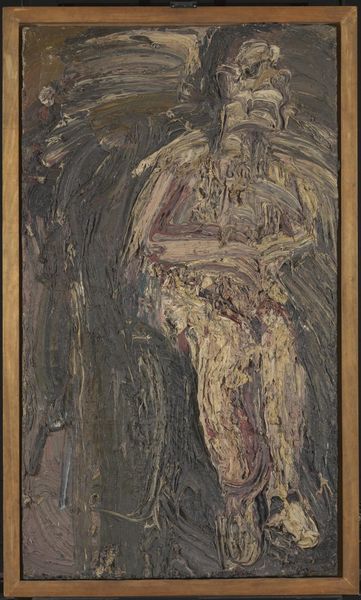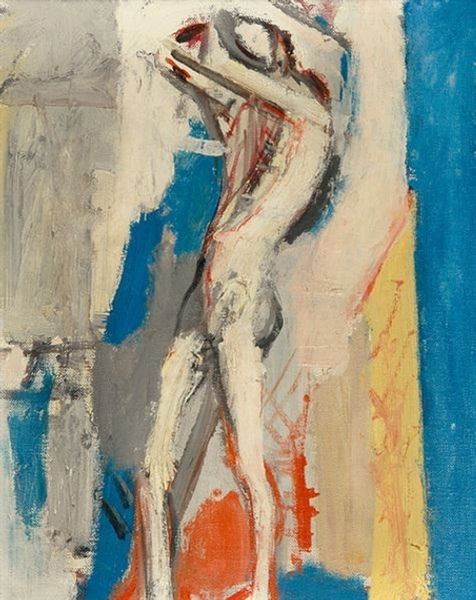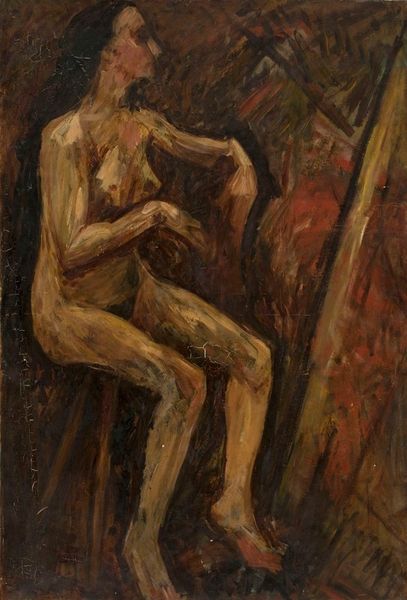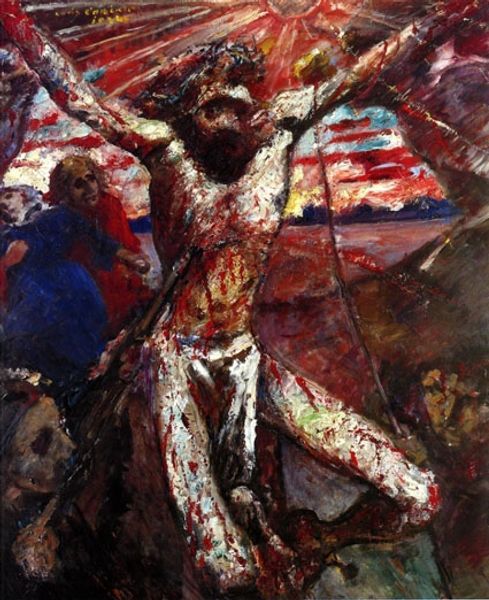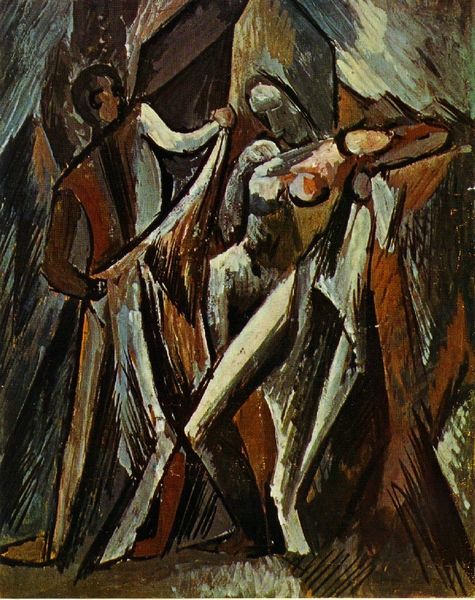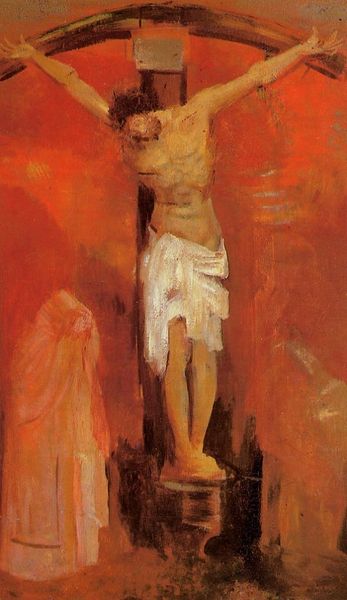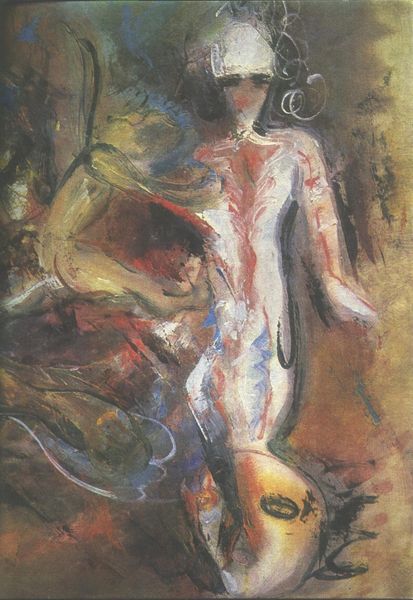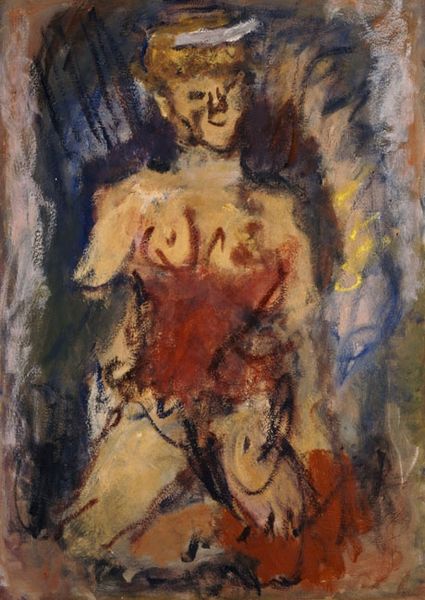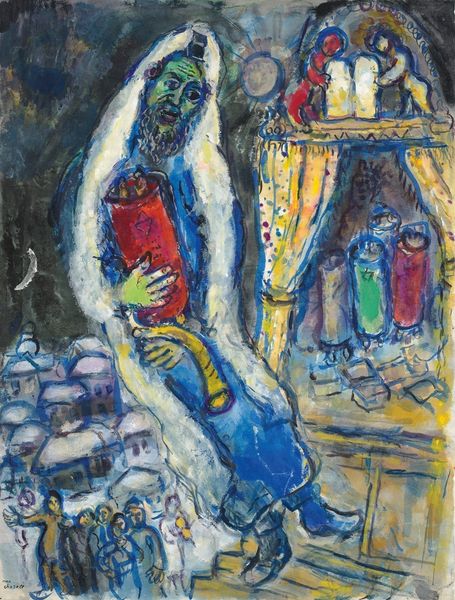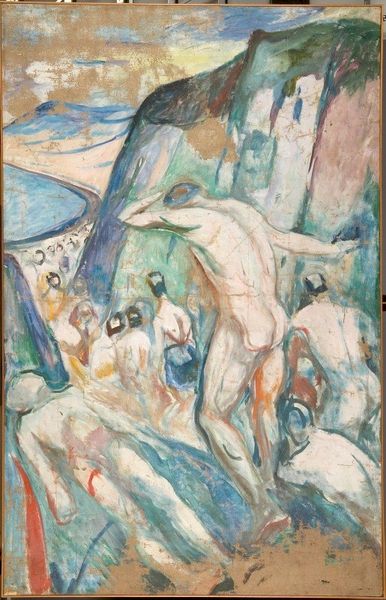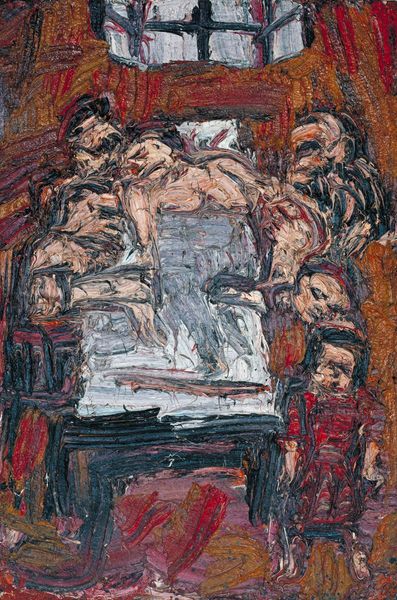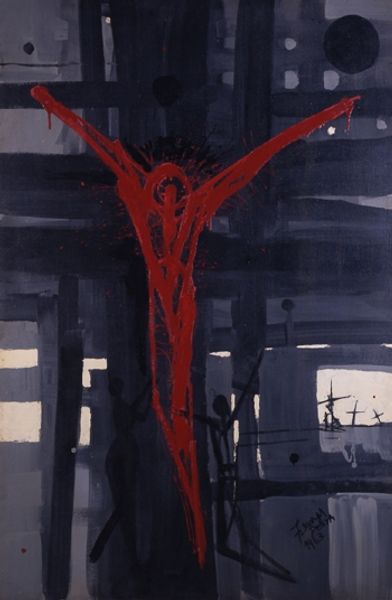
painting, oil-paint
#
painting
#
oil-paint
#
figuration
#
oil painting
#
neo expressionist
#
expressionism
#
matter-painting
#
history-painting
#
expressionist
Dimensions: 45 3/4 x 31 3/4 in. (116.21 x 80.65 cm) (canvas)58 x 44 1/2 in. (147.32 x 113.03 cm) (outer frame)
Copyright: No Copyright - United States
Curator: Here we have Chaim Soutine's "Carcass of Beef," created around 1926. The Minneapolis Institute of Art is fortunate to have it in their collection. It’s an oil painting, and, well, it depicts exactly what the title suggests. Editor: It's brutally visceral! The colors are so intense. Crimson reds clash with those cold blues. The exposed flesh almost pulses off the canvas. It’s disturbing, but undeniably captivating. Curator: Indeed. Soutine repeatedly returned to this subject; there are several versions of "Carcass of Beef" he produced. These works must be considered within the history of still-life and history painting itself, not least its connection with Rembrandt’s treatment of the same subject. The public exhibition and interpretation of works like these inevitably creates certain challenges for museums too. Editor: Speaking of Rembrandt, one can't help but think of the "slaughtered ox," the archetype that hangs heavy here. But there’s something distinctly modern, perhaps even traumatic, in Soutine’s depiction. I can't quite put my finger on it… the color? The raw expression of violence inherent in it? It stirs deep psychological waters—mortality, vulnerability, and something else… perhaps something repressed in contemporary culture. Curator: Soutine painted during a turbulent time between the wars. Considering the climate of social unrest and anxieties that affected artistic subjects across Europe, there’s a question to be raised of how those anxieties were, consciously or unconsciously, played out in artistic contexts. Many believe that Soutine uses the carcass as a reflection of a deeper anguish. The bold application and almost sculptural use of oil paint amplify these sentiments in an extraordinary manner. Editor: Absolutely. Beyond its shocking surface, this painting probes at humanity's complex relationship with death. The dangling carcass takes on a Christ-like pose; in religious symbolism, red symbolizes martyrdom. The painting suggests death may be inevitable but that, ultimately, all flesh becomes something so crude as a hunk of dead meat. Curator: It does speak to art's enduring power to confront uncomfortable realities. Editor: Agreed. A harrowing image but also an enduring and valuable contemplation.
